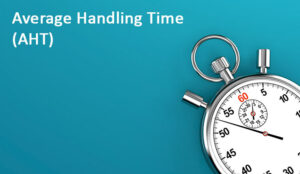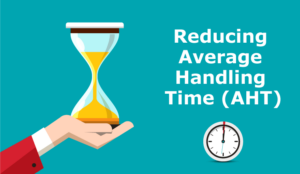Planning for a gradual reduction in Average Handle Time (AHT) over a specific period is a great way to track how long it takes for a new member of staff to reach proficiency.
But what is the AHT Glide Path (Learning Curve) Calculation?
Luis asked our Community of industry professionals about this, and we wanted to share their answers with you:
What would be the the best way to calculate the AHT Glide Path?
Is there any template or standard formula I could use?
The AHT Glide Path Explained
I presume that by “AHT Glide Path” you mean the time that it takes for a new member of staff to bring their AHT down to the level of proficient staff.
The standard calculation for AHT can be found in our article: How to Measure Average Handling Time (AHT)
Watch this video which explains the AHT Glidepath, and you can also download a free copy of the spreadsheet.
With thanks to Jonty
Steps to Calculate AHT Glide Path
Calculating the AHT Glide Path involves setting a target reduction in Average Handle Time (AHT) over a defined period and mapping out incremental milestones to reach that target.
There isn’t a one-size-fits-all formula, but a standard approach can be customized to fit your contact centre’s specific goals and operational realities.
Following these steps can help you put something together that works for you:
Step 1 – Determine the Current AHT
Take a look at your current average handling time and use this formula to calculate it
Average Handling Time (AHT) = (Total Talk Time + Total Hold Time + Total Wrap Time) ÷ Number of Calls Handled
Step 2 – Decide on a Target AHT
Decide on the Average Handling Time you want to achieve by the end of the glide path period.
Step 3 – Establish the Timeframe to Achieve the Target AHT
Decide the period over which the target AHT should be reached (e.g. 12 weeks, 6 months , 12 months etc.)
Step 4 – Create the Glide Path
Break down the total AHT reduction into smaller, incremental reductions for each time interval (e.g., monthly or quarterly).
For this you could either use a linear glide path, where the AHT is reduced evenly over the period, or a non-linear glide path if you anticipate faster reductions at the beginning or end of the period.
With thanks to Chris
Use Existing Staff as a Baseline
I would use existing staff to see how long it takes for new starters to get up to speed. We used to track AHT weekly for our new starters so that we could use the data in our forward planning.
It usually ended up that they took around double the normal time to handle a call to start with, which then dropped off to “normal” AHT by the end of week 7 or 8.
With thanks to Laura
Two Possible Approaches
I think there could be 2 approaches here.
Approach One
You can track the average AHT for the whole new hire (NH) group and you measure how fast that average gets to the target/level of tenured advisors.
For planning purposes I’d use this one because you need the average anywhere.
Approach Two
Each week you can track the % of NHs that started achieving the target. The lengths of the learning curve in this case will be until the moment everyone is this group achieve the goal and you’ll get a 100%. That will be longer than if you calculate the average of the group.
To understanding how the group progresses this one is best.
With thanks to Polina
This article was made possible due to the great community of experts we have at Call Centre Helper, to get involved just join our LinkedIn Community and and if you aren’t already make sure you are following us on LinkedIn to see our latest content.
You may also find these other articles on AHT helpful to read next:
- How to Calculate Average Handling Time (AHT)
- How is Average Handling Time (AHT) Distributed? It is Not How you Think!
Author: Jonty Pearce
Reviewed by: Robyn Coppell
Published On: 12th Apr 2022 - Last modified: 15th Aug 2024
Read more about - Call Centre Questions, AHT Glidepath, Average Handling Time (AHT)















